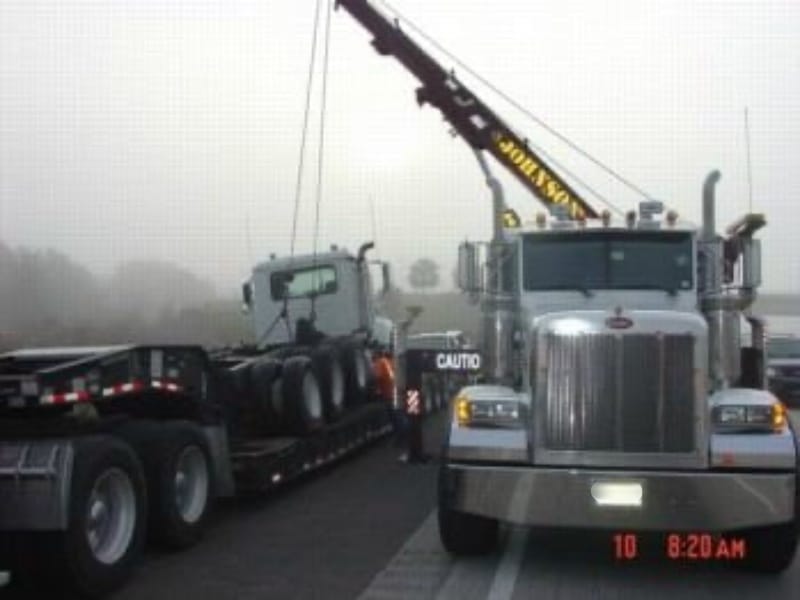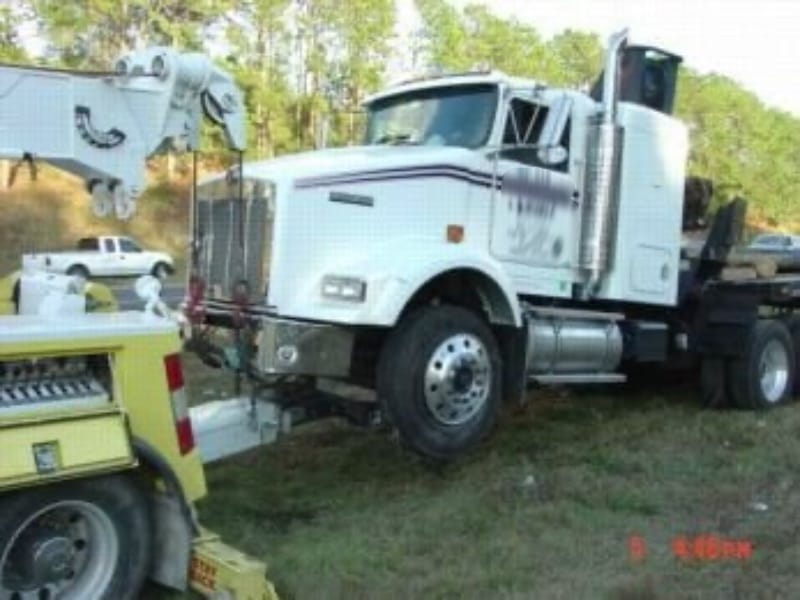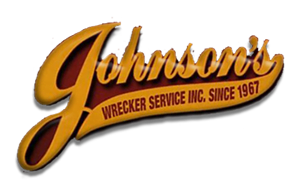What Makes Jackknifing So Dangerous?
Jackknifing will stop a truck cold. It will also shut down the highway, wrecks schedules, and sometimes lives. It’s one of those scenarios no one wants to see on US-441, I-4, or anywhere else. One wrong move, one slick patch, one second of distraction, and a 40-ton rig folds in on itself like a pocketknife. That’s why we’re serious about prevention, especially when we’re out on a US-441 heavy towing call after another trailer’s twisted into its cab.

Slippery Roads and Split-Second Decisions
Rain, ice, and sudden stops are the perfect storm for jackknifing. Sometimes drivers swerved to miss a deer or slammed brakes too fast in a downpour and ended up sideways across both lanes. It’s a problem that often starts with the trailer pushing faster than the cab, especially when speed and load weight aren’t in balance.
These wrecks often don’t just need a tow, but a full-blown recovery with clean-up. And they can lead to hours of shutdowns, backed-up traffic, and damage control.
Staying Out of Trouble Starts Before You Roll
We’re not just pulling trucks off the shoulder, but we’re paying attention to what led them there. And jackknifing usually isn’t just bad luck. It’s preventable. Here’s what we’ve learned from every US-441 heavy towing recovery:
- Check your brakes regularly. Uneven braking pressure between the tractor and trailer is a recipe for disaster.
- Keep your tires in good shape. Poor traction turns a normal stop into a slide.
- Balance your load. Shifting cargo or an overloaded trailer can pull a truck out of line fast.
- Don’t push the speed. Especially downhill or on curves. Control is worth more than a few extra minutes.
Drive Like You’re Carrying Glass
Treat your trailer like it’s full of glass. Smooth steering, steady throttle, gradual braking. That’s the rhythm that keeps a rig stable even when the road doesn’t cooperate. On US-441, I-44, or the Spessard L. Holland East-West Expressway, where sudden curves and changing elevation catch a lot of drivers off guard, it’s not about driving fast but about driving smart.
Use Technology but Don’t Rely on It
Anti-lock brakes and stability control systems are great, but they’re not a free pass. Plenty of trucks with all the tech still jackknife when the driver panicked or overcorrected. Tools help, but habits save.
What Happens After a Jackknife
Once a jackknife happens, we need to do more than just hooking up a rig and towing it off the road. During a US-441 heavy towing job, we might need to:
- Bring in multiple recovery vehicles for separation and alignment.
- Clear debris from both lanes.
- Coordinate with law enforcement and highway crews.
- Recover spilled loads or hazardous cargo.
It’s complicated, it’s dangerous, and it’s avoidable. That’s why we keep talking about prevention.

Johnson’s Wrecker Service Knows US-441 Heavy Towing
Our team handles US-441 heavy towing with the skill, speed, and care this job demands. Jackknifed rigs are always a reminder of how fast things can go wrong and how much work it takes to set them right again.
So if you’re a driver logging miles through in and around Orlando, FL, take this to heart. Don’t assume you’ll never jackknife. Learn how to prevent it. And if you do find yourself stuck sideways and need US-441 heavy towing, know that we’re ready: any hour, any weather, any load.
Drive steady. Think ahead. And if things go sideways, our US-441 heavy towing team has got the gear and grit to get you straight again.
